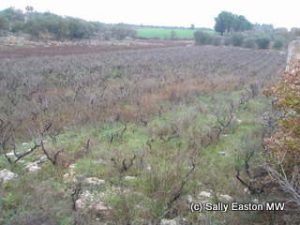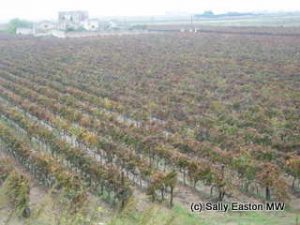Puglia – Italy's second biggest wine-producing region

Old primitivo, Itria valley
In Italy’s deep south lies the country’s second biggest wine-producing region (after Veneto). Puglia has 85,125 hectares of vineyard, producing more than 6 million hectolitres of wine each year (the 2007 to 2011 five year average is 6,328,876 hl). This is some 14% of total Italian production.
In all of this, there are no fewer than 32 DOC/Gs including four DOCGs (Castel del Monte Bombino Nero, Castel del Monte Nero di Troia Riserva, Castel del Monte Rosso Riserva, and Primitivo di Manduria Dolce Naturale), which focus on two grapes the region does very well – nero di troia and primitivo – plus the lesser known bombino nero.
Much has been changing in last decade or two. The inevitable consolidation exists, as it does across the whole of Europe. Puglia’s vineyard area has contracted some 20% from 103,000 ha in 2006 to its present size.
The creation of those four DOCGs, all in 2011, show the push towards quality is evolving. And in the last five years, combined production of DOC and DOCG increased from 12 to 15% of the region’s total production. Additionally production of IGT wines has nearly doubled to 30% share of production in the same time frame. IGT Puglia and IGT Salento would be the best-known, certainly in the UK.
Surprisingly for a warm, southerly, Mediterranean region, more than 40% of production is now accounted for by white wines. Luigi Rubino, of his eponymous estate, and president of the Puglia Best Wine Consortium said “the tradition of our region was red wines. But in the last 5-10 years we’ve changed the idea also of white wine in Puglia. We have a lot of fiano, vermentino, malvasia bianca, and bombino bianco.” Vermentino, made so well in Sardinia, is well adapted to Mediterranean warmth, retaining its acid freshness.
Fiano already has a growing, if still niche, reputation, especially on export markets. Though in Puglia theirs is called fiano minutolo, and will soon (at some point) be called just ‘minuotolo’. It is said to have little, if anything, to do with the fiano of Avellino, in nearby Campania. Those tasted were big on floral, peachy, lime blossom aromas, with fresh, green apply acidity and a light to medium body.

Tenute Rubino's Jaddico single vineyard
Another trend is the production of some single vineyard wines, where Puglia historically was known for producing bulk wine for blending, focused on quantity rather than quality. Rubino said “there is a tight bond between the wine and single vineyards. I was the first in Puglia to name wines after single vineyards.”
Such a strategy “brought risks” he added. “The aim as a producer is to bring out the best from each single vineyard. [The need for] meticulous selection of grapes for each single vineyard meant that some vintages are not released because they fall below the standard the winery set.”
Along with the trend for a growing band of producers to focus on quality, grape varieties that do particularly well are being highlighted. Primitivo tops the list here, though nero di troia, grown in the north of Puglia, is producing some really interesting wines, after viticultural research identified ways to get better results from the fruit.
Primitivo is grown all over the region and produces different results when grown in the centre and north, at higher altitudes, up to 400 metres in the Itria valley, compared to the rich, heady, and sometimes slightly sweet styles made in nearer sea level in the Salento peninsula.



